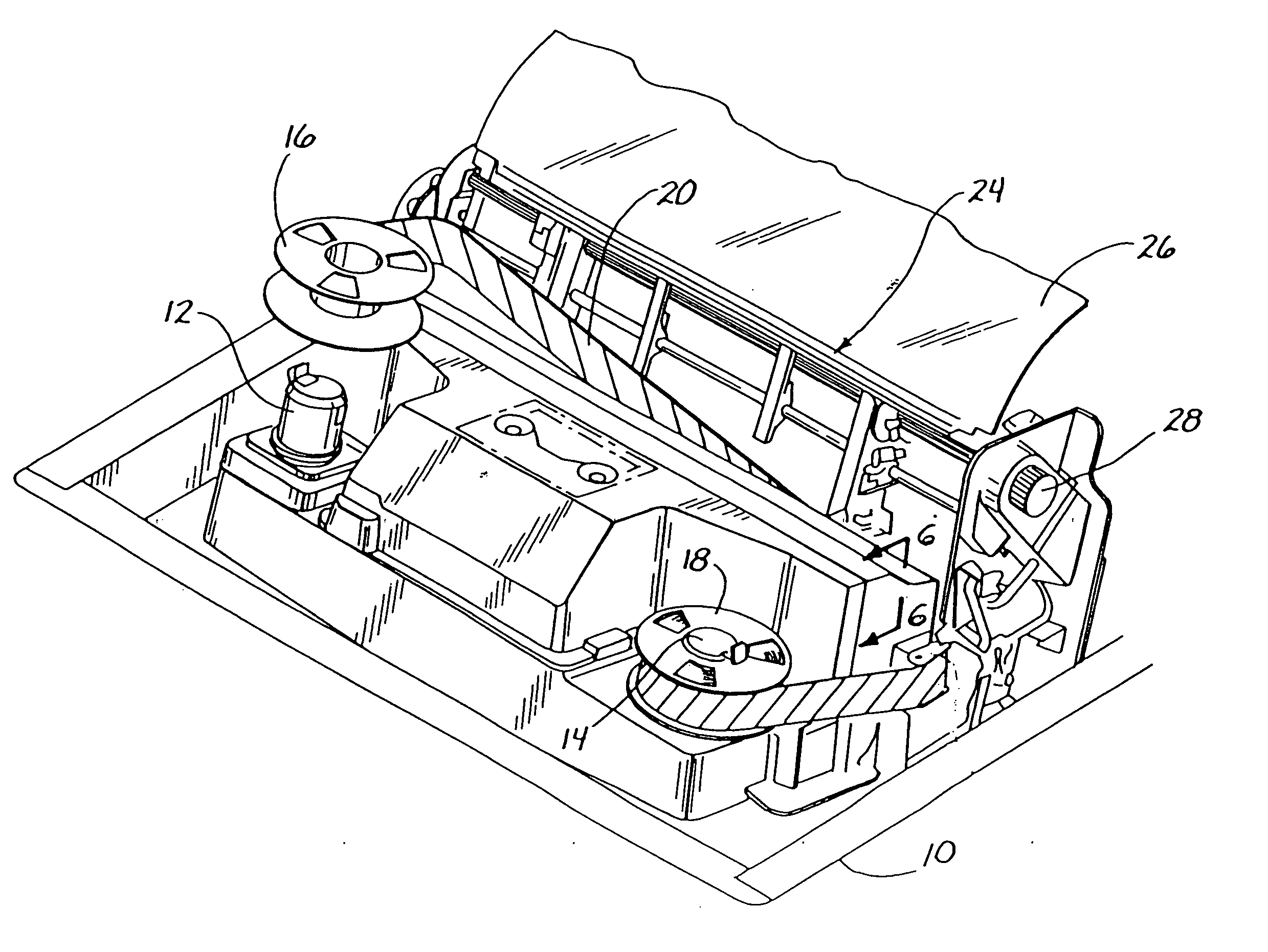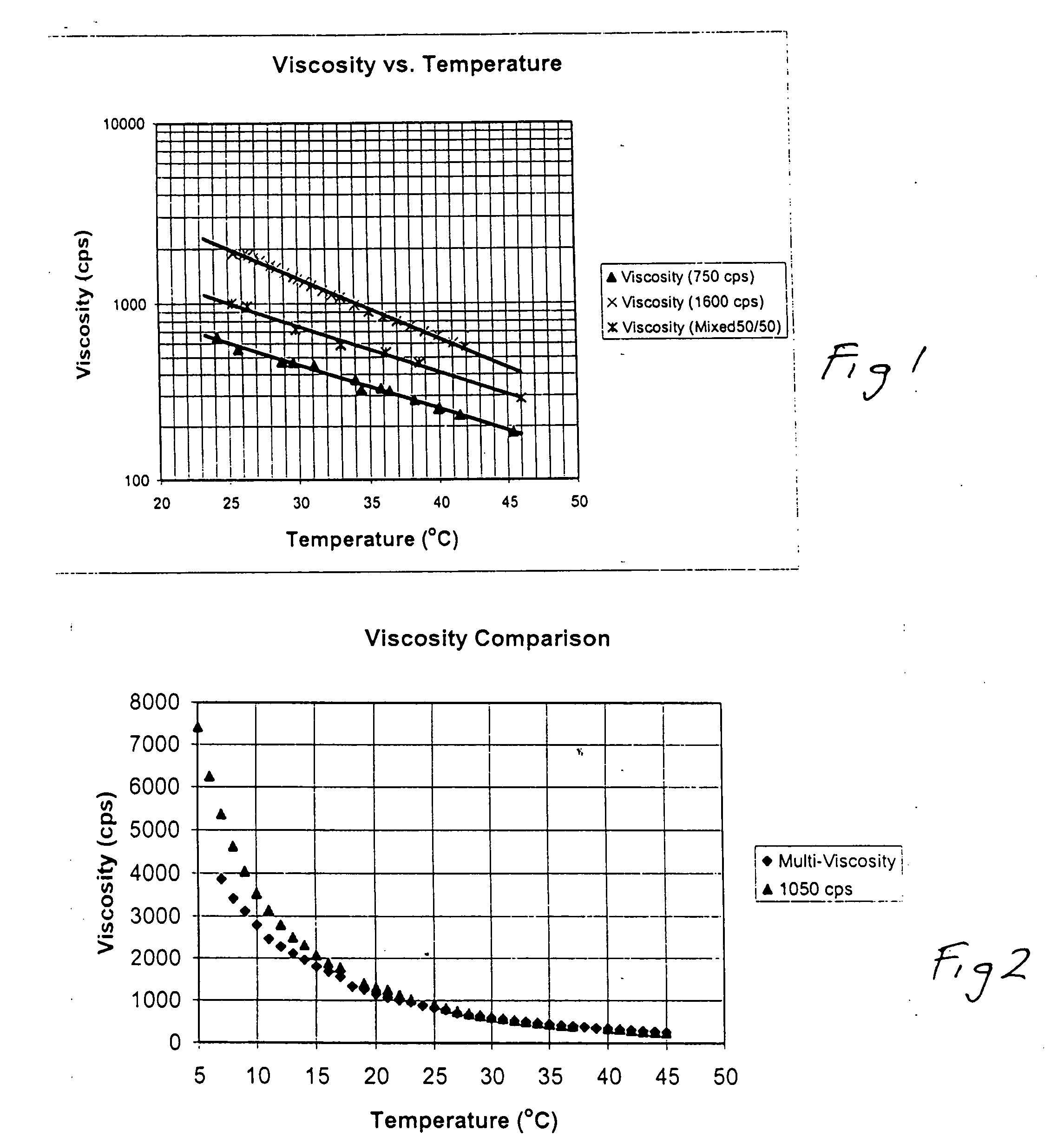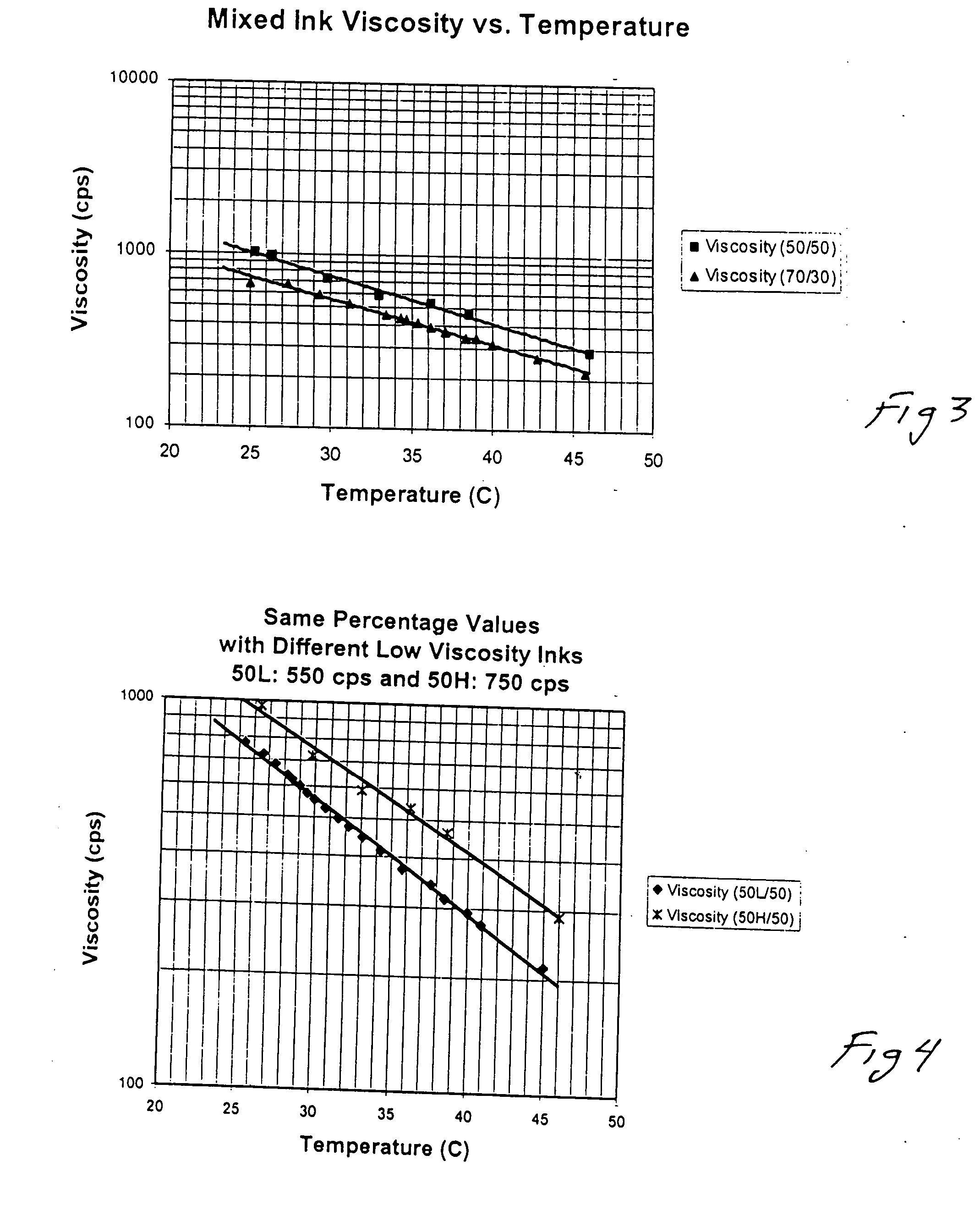Multi-viscosity printer ink
a printer ink and viscosity technology, applied in the field of printing inks and printing systems, can solve the problems of low viscosity printer ink loss of shear strength at high temperatures, ink smearing and ink migration, and lowering print quality, so as to reduce or eliminate the propensity for ink smearing, maintain print density and ink distribution, and improve printing results.
- Summary
- Abstract
- Description
- Claims
- Application Information
AI Technical Summary
Benefits of technology
Problems solved by technology
Method used
Image
Examples
Embodiment Construction
[0030] Looking more specifically at FIG. 5, it can be seen that a printer 10 is shown having spindles or hubs 12 and 14.
[0031] The hubs 12 and 14 receive respectively spools of print ribbon 16 and 18. The ribbon in these respective spools moves forwardly and backwardly across the face of a number of hammers on a printer hammerbank facing the print ribbon 20 that is wound around the spools 16 and 18.
[0032] In order to support paper, a paper support 26 is shown with a splined shaft 24 and knob 28 to advance paper along a tractor.
[0033] Looking specifically at FIG. 6, it can be seen that a hammerbank portion of the impact line printer in the form of a fragmented segment toward the end of the hammerbank is shown. The fragmented portion of the hammerbank is a segment that is cut from an elongated hammerbank having approximately anywhere from forty to one hundred print hammers more or less. The print hammers can be retained and then fired or released against a print ribbon as is well k...
PUM
 Login to View More
Login to View More Abstract
Description
Claims
Application Information
 Login to View More
Login to View More - R&D
- Intellectual Property
- Life Sciences
- Materials
- Tech Scout
- Unparalleled Data Quality
- Higher Quality Content
- 60% Fewer Hallucinations
Browse by: Latest US Patents, China's latest patents, Technical Efficacy Thesaurus, Application Domain, Technology Topic, Popular Technical Reports.
© 2025 PatSnap. All rights reserved.Legal|Privacy policy|Modern Slavery Act Transparency Statement|Sitemap|About US| Contact US: help@patsnap.com



